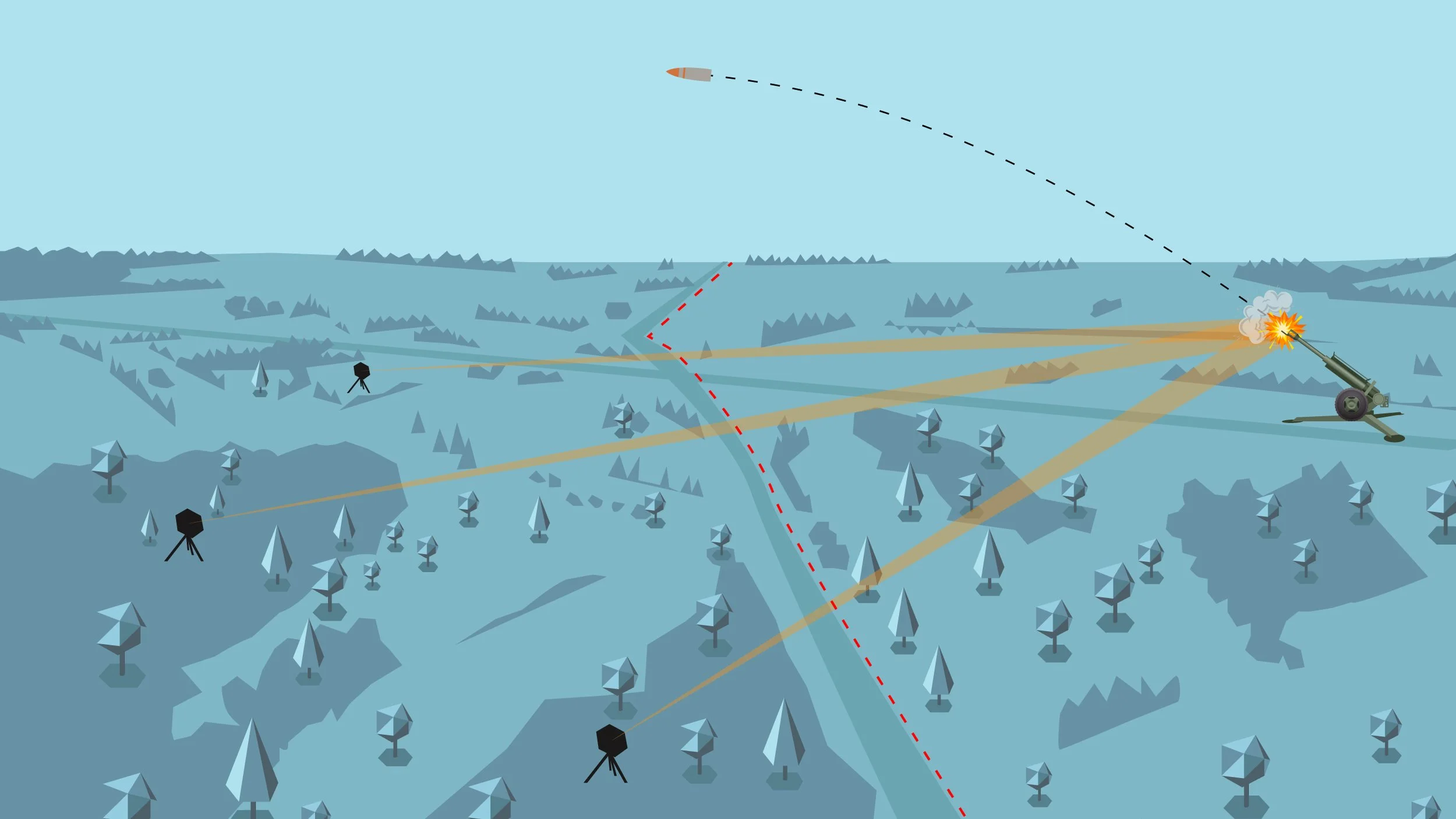ACOUSTIC C-RAM
Counter Rocket, Artillery and Mortar
Rockets, Artillery and Mortars (RAM) has long been a dominant force on the battlefield, earning its reputation for overwhelming firepower. The ability to detect and respond to this threat before it can cause destructive damage, has proven to be critical for effective counter-battery operations. In addition, recent conflicts have made it clear that emitting any RF signature can make you a target, making traditional, active C-RAM measures more vulnerable. As a result, new approaches are required to ensure detection and prevent damaging attacks from enemy Rockets, Artillery, and Mortars (RAM).
Acoustic detection systems help maintain situational awareness and improve threat assessment without increasing detectability from enemy fire. Sensors such as Discovair operate passively, listening 24/7 without revealing their position. They can work alongside radar by alerting it only when a threat is detected, allowing it to remain in standby mode for most of the time and minimizing its exposure. In cases where radar is compromised or unavailable, mobile and lightweight acoustic systems can take over entirely, providing detection and localization of enemy artillery fire.
Integrating acoustic technology into C-RAM solutions is a natural adaptation to modern warfare, where traditional detection methods are increasingly targeted or bypassed. By providing continuous, passive surveillance, acoustic systems ensure a resilient and gap-free defense against RAM-threats. Squarehead Technology’s Discovair system can contribute to ensuring that forces remain protected and aware, even in the most challenging operational environments.
How it works
Acoustic detection of Rocket, Artillery and Mortars (RAM) is made possible with the Discovair sensor, by having it operate through a network of multiple sensors that passively detect and track artillery fire, including muzzle blasts, rocket launches, and mortar discharges. By analyzing the acoustic signature of these events, the system determines the direction and triangulates the point of origin, providing coordinates for enemy artillery or mortar positions.
Each sensor continuously monitors its surroundings for sudden acoustic changes, using advanced signal processing algorithms to differentiate between battlefield noise and actual threats. When a launch or detonation is detected, the system triggers high-resolution acoustic beams that isolate and analyze the sound source, ensuring full situational awareness in complex environments. Read more about our technology here.
The system can be accessed via a browser-based interface or integrated into an existing command-and-control (C2) system through an API. Upon detection and classification, alerts—along with bearing and estimated location of the threat—are immediately transmitted to the operator’s display or forwarded to automated Battlefield Management systems (BMS).
INTERESTED IN A CHAT TO FIND OUT HOW ACOUSTIC C-RAM CAN BE IMPLEMENTED
IN YOUR DEFENSE SYSTEMS?
Acoustics and multi-purpose
One of the major advantages of using acoustics when operating in complex defense scenarios is that everything makes sound. This makes acoustic technology highly versatile and adaptable in what it can detect. Squarehead’s Discovair sensor is a passive, multi-purpose system, with a proven track record of deploying acoustic sensors for passive drone detection (C-UAS). Further expanding this capability to detect and classify other threats such as Rockets, Artillery and Mortars, snipers and vehicles, is a natural extension of the capabilities of the Discovair passive acoustic sensor.
In addition to fulfilling multiple detection needs simultaneously, Discovair integrates all these capabilities into the same, easily deployable sensor and command-and-control (C2) system. Discovair achieves wide-area coverage with closely placed sensors, making deployment faster, simpler, and much more adaptable to dynamic operational needs. This gives forces a significant advantage in terms of mobility, scalability and adaptability to new scenarios, with a passive system they can trust to keep them safe.


